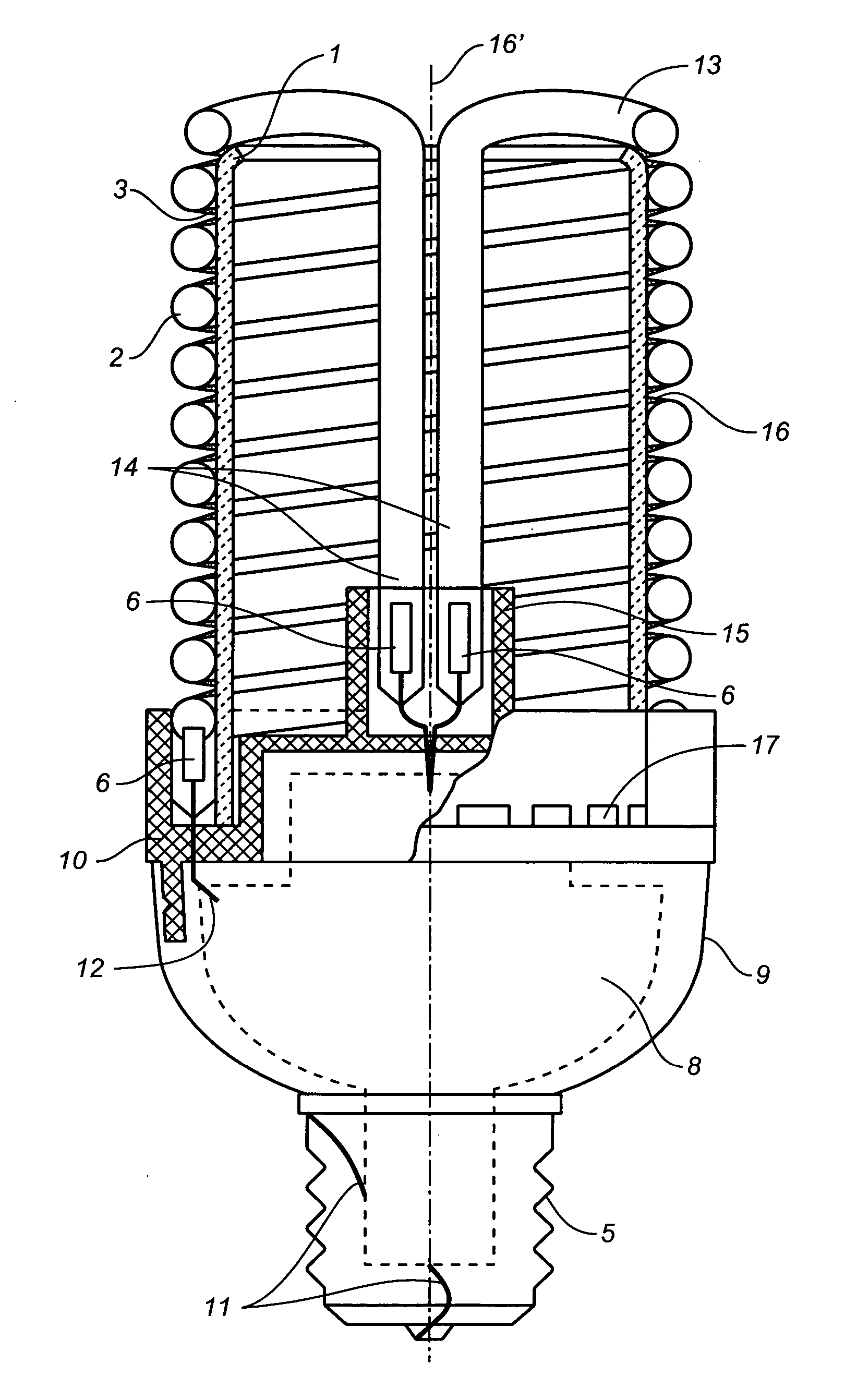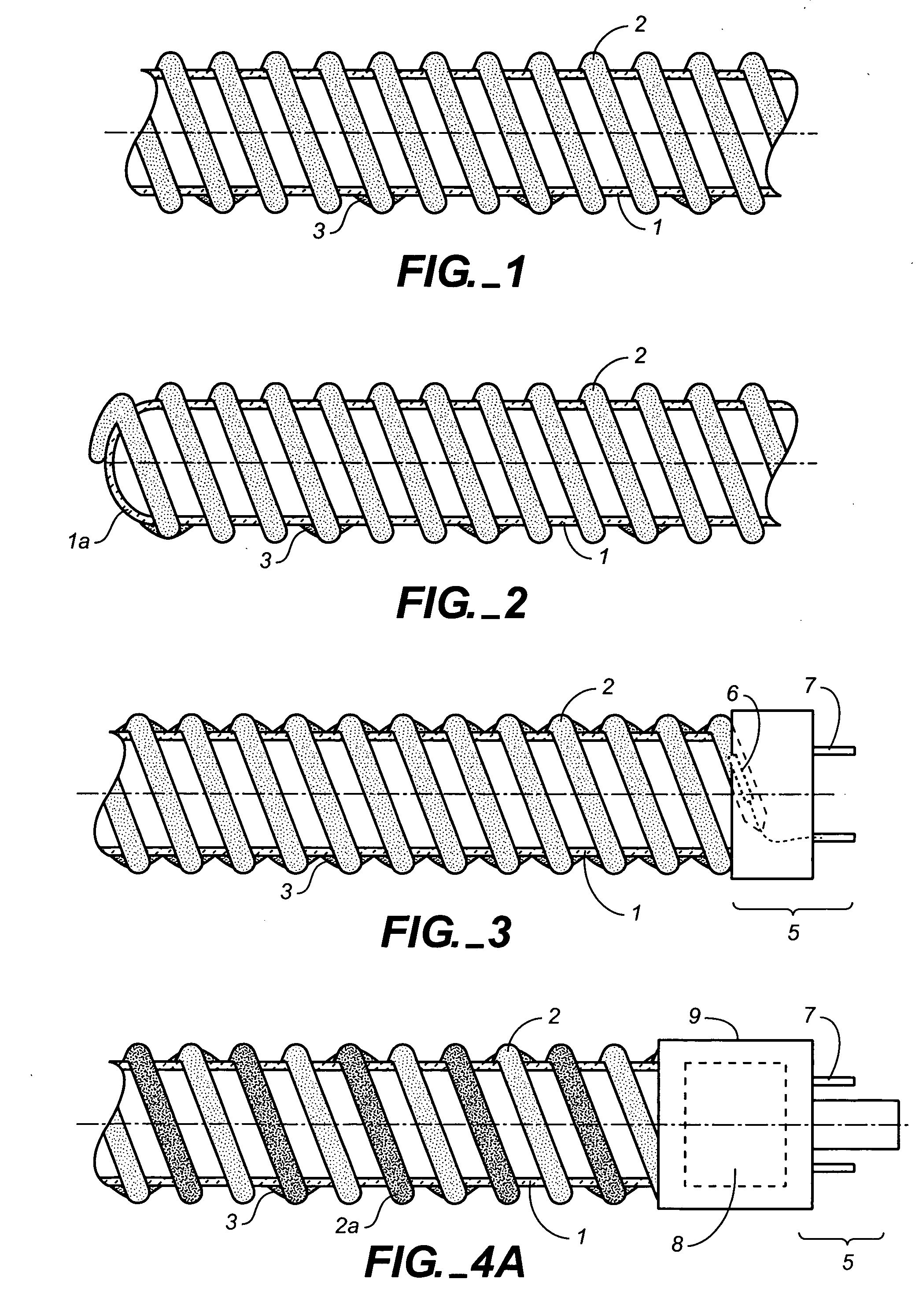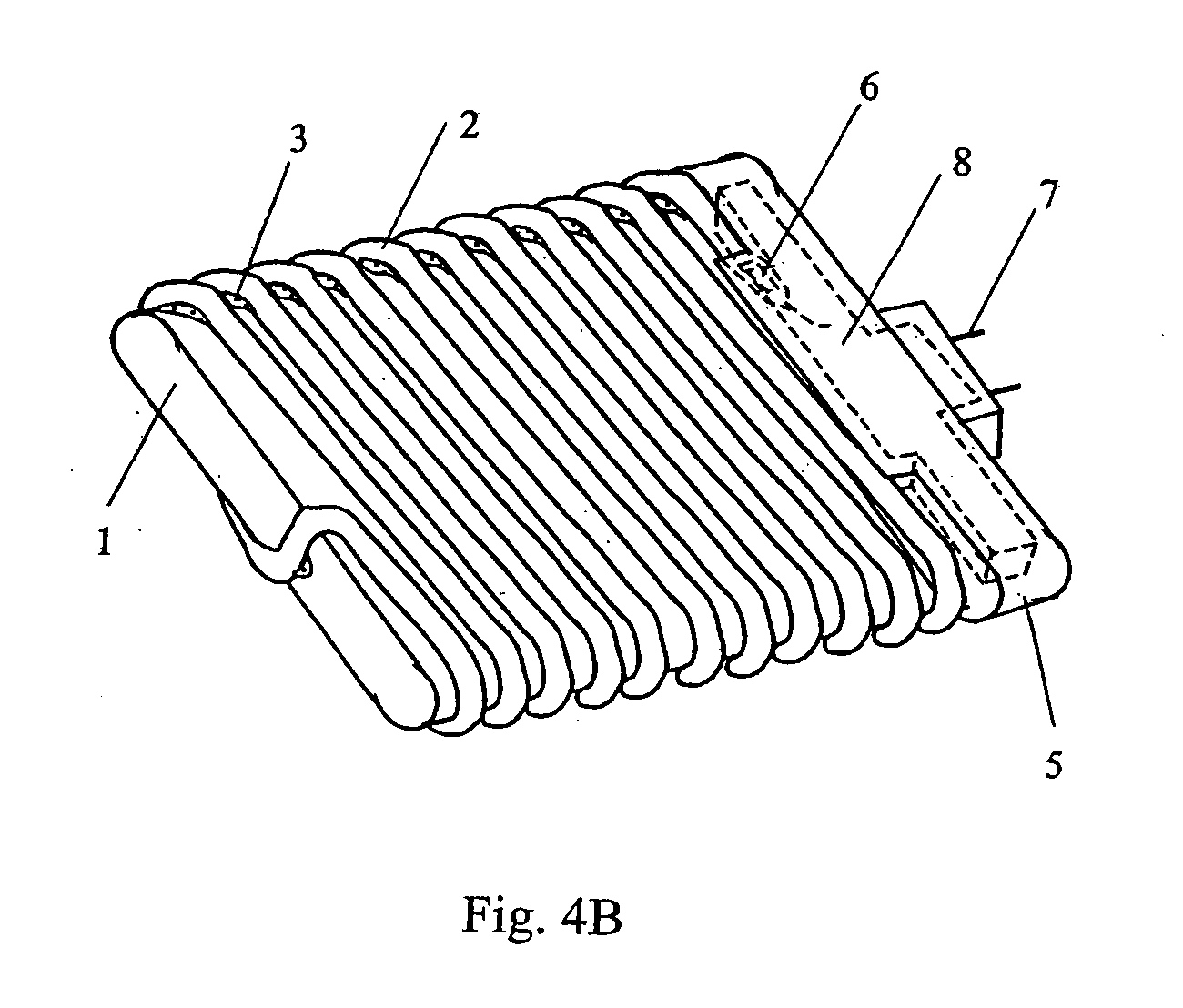Gas discharge fluorescent device with lamp support
a fluorescent device and fluorescent technology, applied in the direction of cathode-ray/electron beam tube circuit elements, instruments, lighting and heating apparatus, etc., can solve the problems of reducing ccfl becomes fragile and prone to damage, and impedes heat dissipation, so as to reduce the efficiency and useful life of the lamp, reduce the operating temperature of the ccfl, and reduce the effect of heat dissip
- Summary
- Abstract
- Description
- Claims
- Application Information
AI Technical Summary
Benefits of technology
Problems solved by technology
Method used
Image
Examples
Embodiment Construction
[0031]FIG. 1 is a partially cross-sectional and partially perspective view of a CCFL lighting device comprising a lamp support 1 and a CCFL 2 supported by the lamp support. As shown in FIG. 1, lamp support is in the shape of a pole and the CCFL is in the shape of a spiral wrapped around the support pole 1. The CCFL is attached to the surface of the support pole 1 by means of adhesive 3 at a number of locations along the length of the CCFL 2. The adhesive 3 may preferably be of a type that is stable and does not lose its adhesive function or expand or contract significantly to the extent that would significantly reduce the mechanical strength of the lighting device, despite exposure to heat and ultraviolet radiation. In one embodiment, adhesive 3 may be an epoxy, silicone, silicone rubber, resin or plastic type adhesive.
[0032] The support pole 1 may have a circular or elliptical cross-section and may comprise glass, plastic, ceramic or a metallic material, which may be transparent, ...
PUM
 Login to View More
Login to View More Abstract
Description
Claims
Application Information
 Login to View More
Login to View More - R&D
- Intellectual Property
- Life Sciences
- Materials
- Tech Scout
- Unparalleled Data Quality
- Higher Quality Content
- 60% Fewer Hallucinations
Browse by: Latest US Patents, China's latest patents, Technical Efficacy Thesaurus, Application Domain, Technology Topic, Popular Technical Reports.
© 2025 PatSnap. All rights reserved.Legal|Privacy policy|Modern Slavery Act Transparency Statement|Sitemap|About US| Contact US: help@patsnap.com



